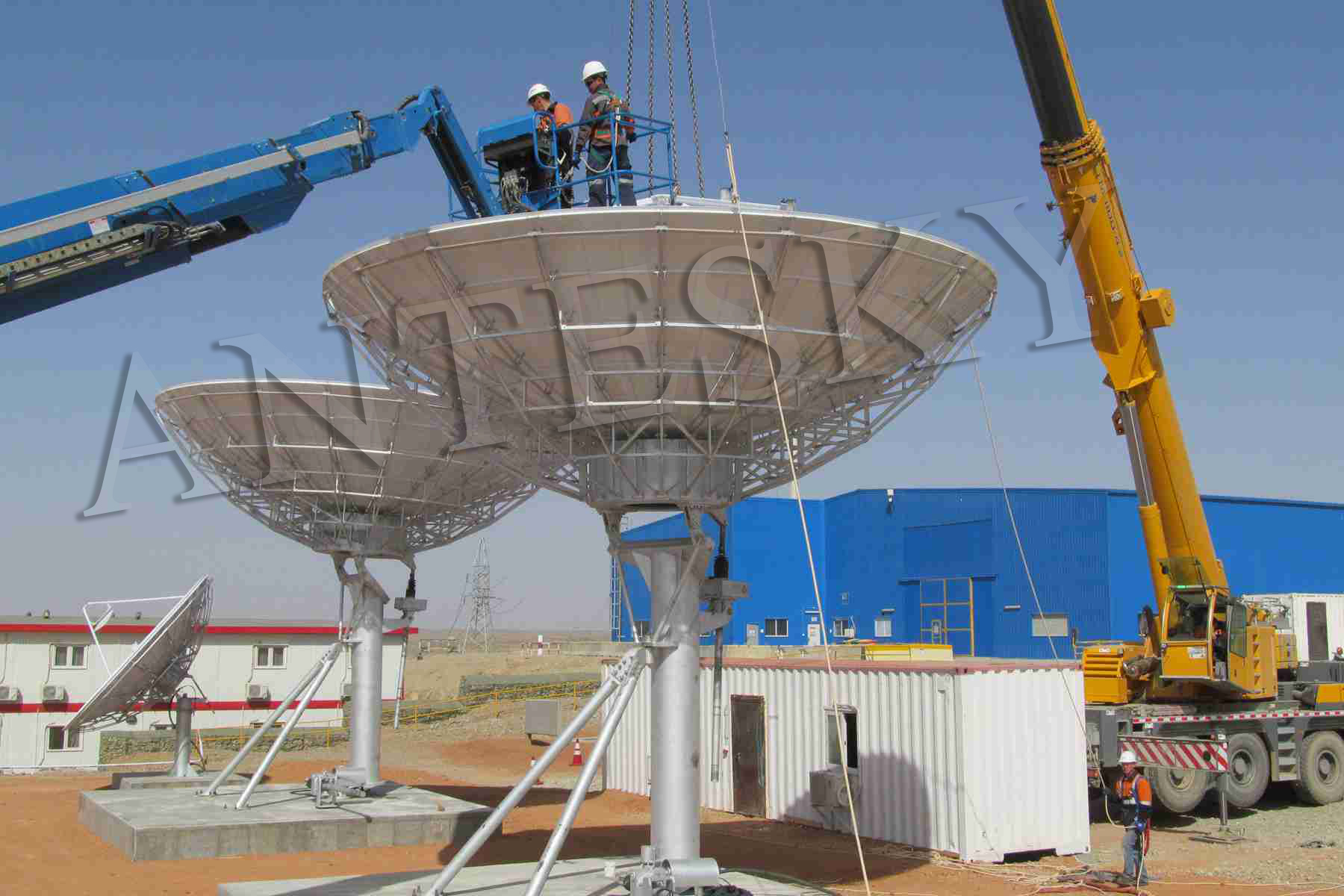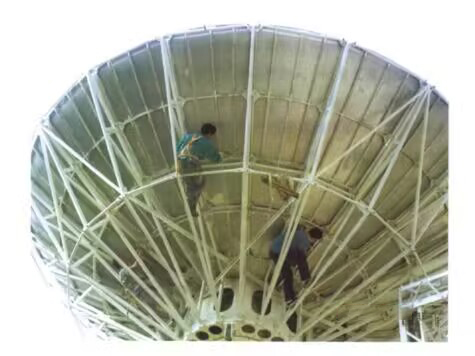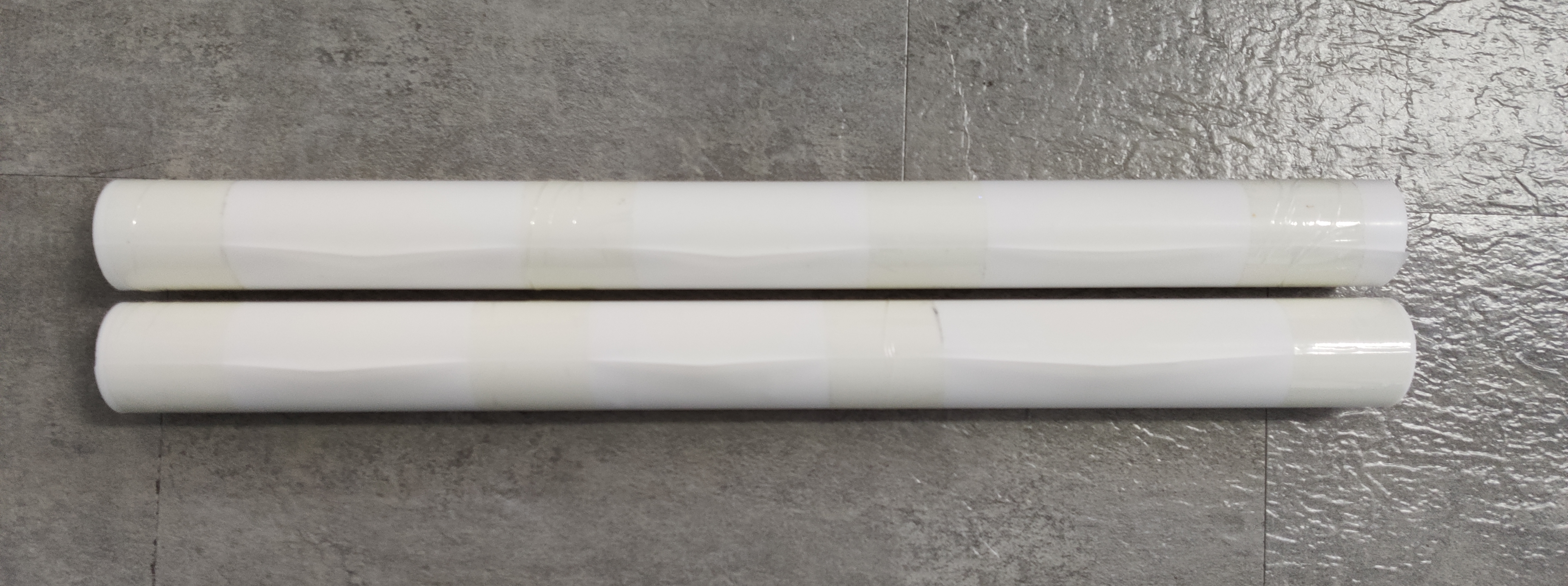The material of the antenna feed film is generally polytetrafluoroethylene PTFE material, which can not dry and crack under long-term sunlight. The screw hole for fixing is constantly stretched and deformed, and the screw hole becomes bigger and bigger over time, which finally affects the sealing of the feed source film, resulting in air leakage, unable to guarantee the dryness of the waveguide and feed source inner cavity, and increasing the loss of radio waves . When the damage is serious, it will also cause water to enter the feed of the rainy antenna, making the expensive antenna scrapped. In addition, because the antenna is in outdoors, birds are easy to stop on the antenna feed film and scratch the antenna feed film. In order to keep the transmitting antenna in good working condition, the antenna feed film must be checked when the film is aging and the air retention time of the antenna is abnormal, and it must be replaced immediately if it is damaged. However, the operation of changing the feed film of the antenna is a high-altitude operation, and the process is relatively complicated. Generally, it takes several hours to complete under normal conditions. An unfinished small detail may lead to poor sealing of the antenna feed film and air leakage, which requires rework.
This article lists the satellite earth station satellite antenna feed film replacement process, the purpose is to summarize the complexity of antenna feed film replacement. The method and experience of the construction project, that is, to collect and organize the operation experience, method improvement and precautions in each construction process, to standardize the details of each step of operation, to establish and improve the first-class operation process standard, so as to reduce the rework rate.
2.Processes and instructions of earth station antenna feed film replacement
Below are 6 steps for replacing antenna feed film.
2.1Preparation
1) Submit an application report to the Supervision Center in advance.
2) Prepare the required operating tools and spare parts before installing the antenna. The details are as follows: 3 sets of 8″ fork plates, 3 sets of 8″ sets of plates (1 for each spare), and a medium-sized activity alarm (remove the antenna panel For nut), 5 pieces of 703 sealing silicone, 3 paper cutters (or 1 piece and 2 blades), 1 bottle of alcohol, cotton or gauze, ladder, 1 pair of walkie-talkies (the walkie-talkie should be charged in advance), 4 sets of safety belts , 2 sheets of feed film (1 spare), 30 sets of new screws (6 sets of spare), 1 watercolor pen, 1 pair of scissors, 1 plastic belt, broom and dustpan, 1 hole punch, feed film Plastic baffles, ladders.
3) After being approved by the Supervision Center, set the automatic power boost system to the “manual” state.
4) Make sure the earth station antenna status is normal.
2.2 Adjust the earth station antenna
1) Write down the earth station antenna parameters (azimuth and elevation angle, beacon level, etc.) under normal conditions.
2) Use the antenna controller (ACU), enter the manual adjustment mode, and adjust the antenna elevation angle to 67~68 degrees. Before adjusting the antenna elevation angle, you can first open the protective cover of the elevation adjustment screw to avoid when the lead screw rotates, extends or shrinks, the protective cover is rolled into the thread groove, thereby affecting the adjustment work of the antenna.
2.3 Remove the old earth station antenna feed film

It is necessary to manually disassemble an antenna maintenance panel, open the maintenance window into the antenna, and fix the panel with a rope after removal to prevent the panel from slipping. After entering the antenna reflector, put the prepared tools in place. The ladder should be placed in front of the feed. Note that after one person climbs the ladder, because the elevation angle of the antenna still has a slope, someone must hold the ladder to prevent accidents from happening. The antenna feed port is a corrugated horn, and the vertical distance from the center point of the antenna surface is about 2m. The feed film is fixed on the edge of the feed port by screws, and the sequence from top to bottom issteel ring, feed film, rubber pad, and feed port flange.
2) Use a paper knife to remove the sealant on the surface of the feed film and its side, so that the screw can be screwed up and down. Loosen and remove the fixing screws one by one, and remove the steel ring, feed film and rubber pad in sequence. Note that the lower screws should be lowered diagonally to prevent the deformation of the steel ring above the feed film due to uneven force; lift the feed film to expose the horn of the antenna feed, and pay attention to strictly prohibit foreign objects from entering the horn, so as not to affect the feed work performance.
3) Cover the custom-made feed port plastic baffle to prevent foreign matter from entering, and cut off the silicone on the horn.

2.4 New earth station antenna feed film processing
1) Since the newly purchased rubber pad and feed film are unprocessed and have no holes, they need to be processed. First of all, cut off the silica gel on the steel ring, and use the old feed film as a reference to cut a new feed film.
2) The new feed film is placed flat and compacted with a steel ring without any slight movement. Use a marker pen to mark holes on the feed film through the wire holes of the steel ring, and then punch holes , Move about 2mm outside the marked point when punching, mark the rubber pad in the same way, and punch holes with a puncher. Clean the new feed membrane with cotton-veggie alcohol to keep it clean and dust-free.

2.5 Installation of new feed film and rubber pad
1) Apply 703 sealant to the incision and gap of the original horn sealing ring (be careful not to apply too much, just fill it up and never apply it into the screw hole).
2) Take out the plastic baffle of the horn, and be careful that the foreign matter on the baffle enters the horn .
3) After the feed film is fully dried, put the rubber pad, feed film and steel ring on top to cover the edge of the feed port in turn, and align all the wire holes.
4) Install 24 sets of screws, and tighten all screws diagonally.
5) After the replacement inspection, apply S704 silica gel evenly between the rubber pad and the flange of the feed port between flange and feed film and the feed film, and for all gaps between the feed film and the steel ring, including all screws holes are painted. The antenna feed film is mainly sealed by silica gel, and the coating of silica gel must be even and meticulous. After the sealant is applied, it cannot be blown with a hair dryer, and the silica gel needs to have a solidification time of 24 hours before it can be inflated with an inflator, and the air retention time must be at least half an hour to be qualified.
2.6 The last step of earth station antenna feed film replacement
1) Clean satellite antenna reflector and confirm that the maintenance work of the antenna surface is completed, carry tools away from the antenna surface and install the restoration antenna maintenance panel.
2) Enter the manual adjustment mode by the antenna controller unit (ACU) to adjust the elevation of the antenna, restore it to the normal transmission state, and confirm that all parameters are consistent with the antenna parameters under the normal state.
3)The operation and maintenance results are recorded and archived for future reference.
The above is the process and installation guide for replacing the feed film of earth station antenna. We hope it will be helpful for your work. If you have any questions or suggestions, please contact us


